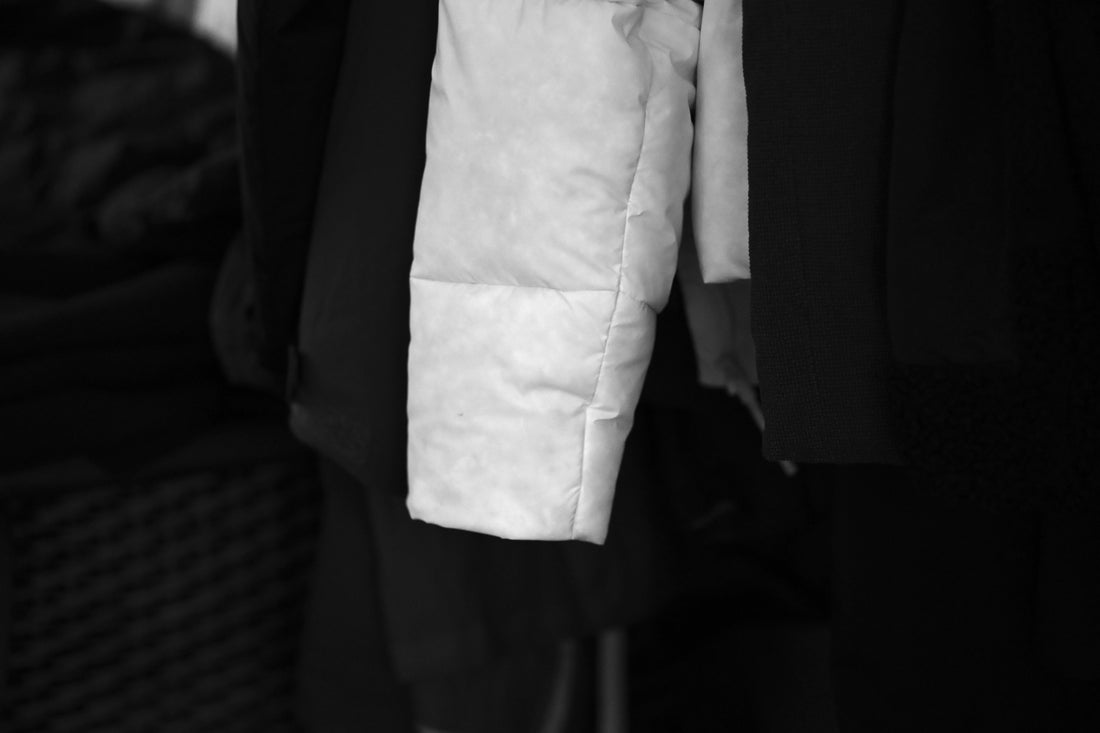
How to Find the Best Puffer Jacket: A Complete Guide to Warmth, Fill, and Fit
Choosing the right puffer jacket isn't just about picking a stylish winter coat—it's about understanding what’s inside. From fill materials to insulation ratings, from feather leakage to the real difference between a puffer jacket and a down jacket, there’s more going on under the surface than you might expect. This guide breaks down how to evaluate the quality of a puffer jacket so you can stay warm, dry, and comfortable all winter long.
What Is a Puffer Jacket, and How Is It Different from a Down Jacket?
The term puffer jacket refers to the jacket's quilted or “puffed” design, which contains insulation material in stitched sections or baffles. A down jacket specifically refers to jackets filled with down feathers—the fine undercoat feathers from ducks or geese.
So, all down jackets are puffer jackets, but not all puffer jackets are down jackets. Many puffer jackets today use synthetic fills instead of down. The difference lies in the filling, not the outer look.

Is a Puffier Jacket Always Warmer?
Not necessarily. While puffiness can be a visual indicator of insulation, it’s not always the best measure of warmth. What really matters is:
-Fill power: This refers to how much space one ounce of down takes up in cubic inches. Higher fill power (like 800+) means better insulation with less weight.
-Fill weight: This refers to how much down is actually in the jacket. A high fill power but low fill weight jacket may not be as warm as a jacket with slightly lower fill power but more fill overall.
So no, a puffier jacket isn't always better. It’s about the quality and volume of the insulation material inside.
Do Heavier Jackets Mean Warmer Jackets?
A heavier puffer jacket isn’t necessarily warmer. Weight can come from outer fabric, zippers, lining, or bulkier synthetic fill—not necessarily high-performance insulation. The warmest jackets are usually lightweight yet well-insulated, using high fill-power down or advanced synthetic fibers.
How Does a Puffer Jacket Keep You Warm?
Puffer jackets work by trapping warm air within their insulation. Down and synthetic materials both create loft, which holds body heat in. The more effective the loft, the better the insulation. That’s why compression ruins insulation—flattened jackets trap less air, making them colder.
What Types of Fill Are Used in Puffer Jackets?
Here’s a quick overview of the most common insulation materials:
Natural Fills
-Goose down: Warmer and loftier than duck down. More expensive.
-Duck down: Slightly less warm but more affordable.
-Down blends: Mixed with feathers or synthetic fibers to reduce cost.
Synthetic Fills
-Polyester fibers (e.g., PrimaLoft, Thinsulate): Water-resistant and more affordable.
-Recycled synthetic fill: Increasingly common in sustainable fashion.
-Graphene, Aerogel, or infused fibers: High-tech insulations used in performance outdoor gear.
Down is warmer per gram but loses insulation when wet. Synthetics are heavier but retain warmth when damp and dry faster.
Why Do Some Puffer Jackets Shed Feathers?
Feather “leakage” happens when the fabric weave isn’t dense enough, or the jacket lacks a down-proof lining. Over time, fine feathers poke through the seams or fabric.
To avoid this:
-Choose jackets with tightly woven nylon or polyester shells
-Look for jackets labeled “down-proof” or with DWR coatings
-Avoid low-cost, ultra-light styles with thin outer fabric
What Jacket Specs Suit Which Temperature?
| Temperature Range | Suggested Jacket Type |
|---|---|
| 10°C to 0°C | Lightweight synthetic puffer or 550FP down |
| 0°C to -10°C | Medium-weight 650–700FP down or thick synthetic fill |
| -10°C to -25°C | 700FP+ down or dual-layer synthetic + down mix |
| -25°C and below | Expedition-grade 800FP+ goose down |
Also consider windproofing, shell material, and layering when choosing warmth.
How to Clean a Puffer Jacket Without Ruining It
-Check the care label first
-Machine wash on cold, gentle cycle, with down-safe detergent
-Dry in a dryer on low heat with tennis balls or dryer balls to maintain loft
-Avoid fabric softeners or bleach—they damage insulation
-Spot clean between washes to reduce full wash frequency
How to Keep Your Puffer Jacket Dry
-Choose jackets with DWR (Durable Water Repellent) coatings
-For harsh rain or snow, wear a waterproof shell over your puffer
-Always fully dry your jacket after exposure to moisture
-Store in a dry, uncompressed space—not stuffed in a bag
What Makes a Puffer Jacket Fit Well?
The best puffer jacket should:
-Allow for layering underneath without feeling tight
-Sit close enough to retain warmth, but not restrict movement
-Cover the waist and lower back for warmth retention
-Feature adjustable cuffs, hems, and hoods for better sealing
-Avoid too-loose styles that let cold air circulate inside
Try before you buy, or refer to sizing charts if purchasing online.
Final Thoughts
A high-quality puffer jacket is more than a fashion statement—it’s a fusion of thoughtful materials, construction, insulation science, and climate function. By understanding fill power, materials, proper care, and fit, you can choose a jacket that keeps you warm and lasts for years.
Whether you're facing city cold or mountain snow, knowing how to judge a jacket's quality is the key to staying comfortable in style.
If you're interested in learning more about the materials, science, and craftsmanship behind what you wear, be sure to explore some of our other expert guides. For instance, this breakdown of fabric pricing dives into what really goes into the cost of a yard of fabric—from fiber to finish. Or, if you're curious about performance materials, our article on whether nylon is breathable reveals the real strengths and limitations of this widely used textile.
